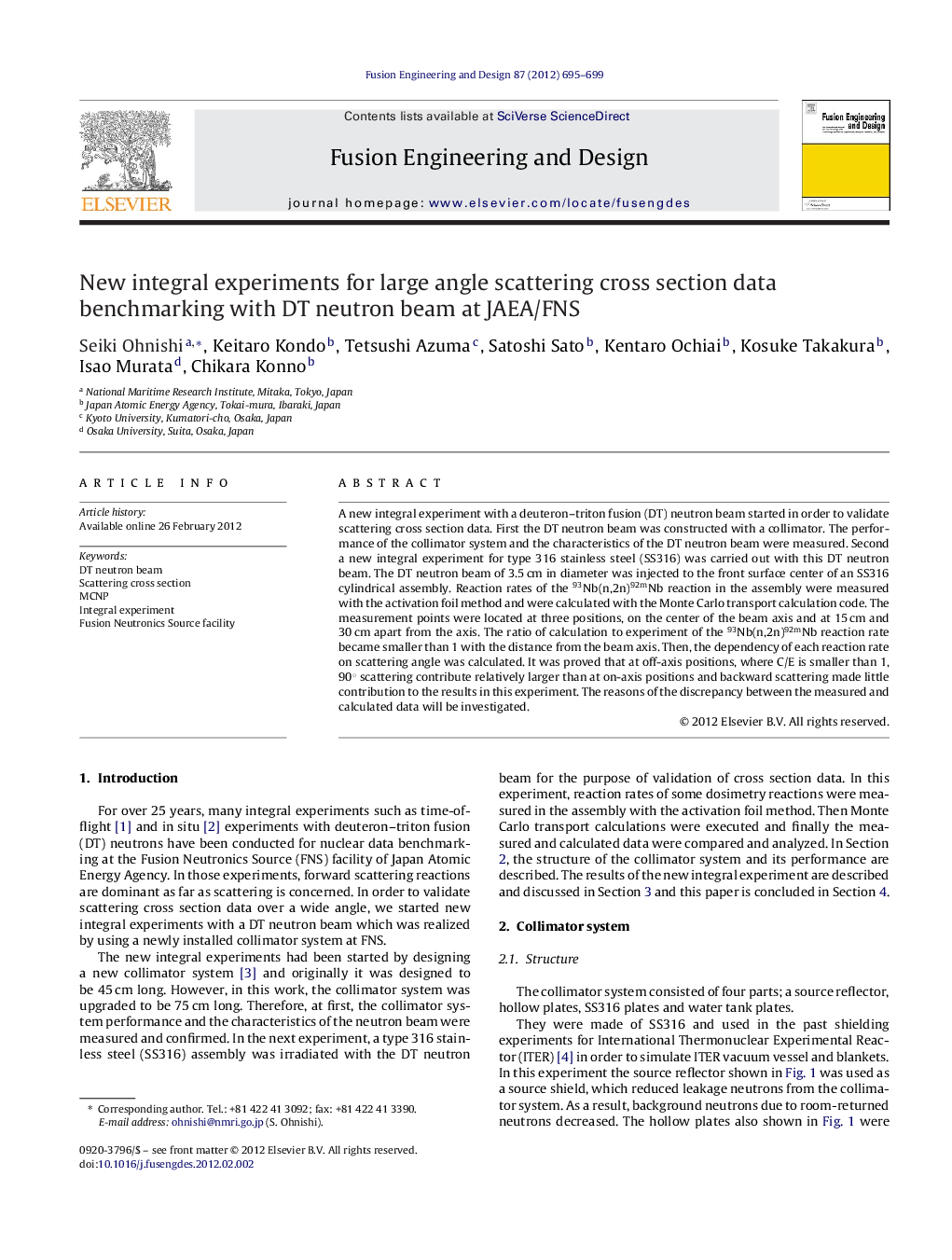| Article ID | Journal | Published Year | Pages | File Type |
|---|---|---|---|---|
| 272254 | Fusion Engineering and Design | 2012 | 5 Pages |
A new integral experiment with a deuteron–triton fusion (DT) neutron beam started in order to validate scattering cross section data. First the DT neutron beam was constructed with a collimator. The performance of the collimator system and the characteristics of the DT neutron beam were measured. Second a new integral experiment for type 316 stainless steel (SS316) was carried out with this DT neutron beam. The DT neutron beam of 3.5 cm in diameter was injected to the front surface center of an SS316 cylindrical assembly. Reaction rates of the 93Nb(n,2n)92mNb reaction in the assembly were measured with the activation foil method and were calculated with the Monte Carlo transport calculation code. The measurement points were located at three positions, on the center of the beam axis and at 15 cm and 30 cm apart from the axis. The ratio of calculation to experiment of the 93Nb(n,2n)92mNb reaction rate became smaller than 1 with the distance from the beam axis. Then, the dependency of each reaction rate on scattering angle was calculated. It was proved that at off-axis positions, where C/E is smaller than 1, 90° scattering contribute relatively larger than at on-axis positions and backward scattering made little contribution to the results in this experiment. The reasons of the discrepancy between the measured and calculated data will be investigated.
► We constructed a deuteron–triton fusion neutron beam. ► A large SS316 cylinder assembly was irradiated by the neutron beam. ► The reaction rates of activation foil were measured inside it. ► The C/Es became smaller with the distance from the beam axis. ► The large angle scattering cross section around 90° affects that.
